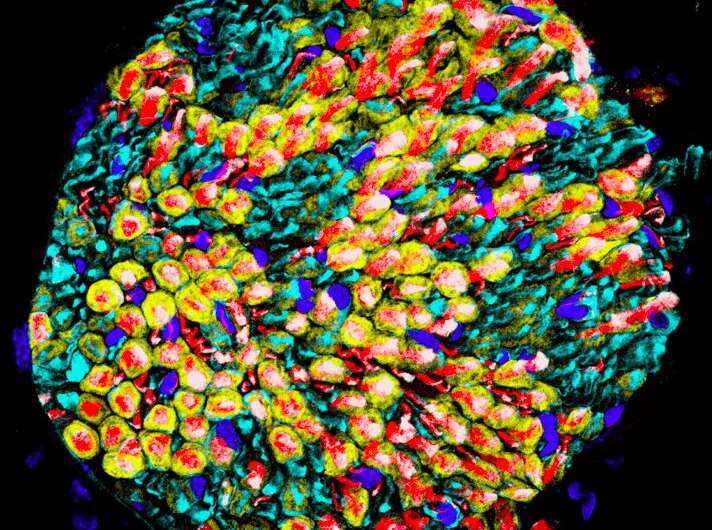Using single-nuclei RNA sequencing to examine glial cells in peripheral nerves

The peripheral nervous system is comprised of all nerves outside of the brain and the spinal cord (i.e., the central nervous system). Peripheral nerves contain a variety of different cell types, including glial cells.
Many past studies have examined the structure and function of peripheral nerves, gathering interesting and valuable insight. Nonetheless, neuroscientists still have a limited understanding of the different cells contained in these nerves and their unique contributions.
Researchers at Washington University School of Medicine have recently carried out a new study aimed at improving the present understanding of different Schwann cells (i.e., glial cells) within the peripheral nervous system. Their findings, published in Nature Neuroscience, were gathered using a relatively new experimental technique, known as single-nuclei RNA sequencing.
“We are interested in how cells, particularly glial cells, in the peripheral nerve provide support to maintain axon function and integrity,” Jeffrey Milbrandt, one of the researchers who carried out the study, told MedicalXpress. “How these cells support health and the consequences that follow when these processes go awry in disease is central to neurodegenerative disorders, such as diabetic neuropathy, ALS and neuropathy caused by chemotherapy.”
In their experiments, Milbrandt and his colleagues examined the peripheral nerves of mice using single-nuclei RNA sequencing. This is a promising technique that allows scientists to profile gene expression using isolated nuclei, instead of entire cells.
The researchers specifically used single-nuclei RNA sequencing to establish transcriptional profiles for individual nuclei in the mouse nerve sample they examined. These profiles in turn allowed them to identify the different cell populations present in the nerve.
“We further uncovered the molecular signature of a novel ‘motor axon-associated’ Schwann cell-subtype that preferentially ensheathes large motor axons,” Milbrandt explained. “This motor axon-associated subtype is depleted in both ALS mouse and ALS patients’ nerves.”
The recent study carried out by this team of researchers sheds new light on the composition of the peripheral nervous system, unveiling some of the different cell types within it. Remarkably, it identifies different subtypes of Schwann cells, immune cells and stromal cells.
In the future, these findings could pave the way towards the creation of more accurate models of peripheral nervous system disorders. In addition, they could inspire new biological studies examining the role of the different cell subtypes it uncovered in promoting health or disease.
Source: Read Full Article
